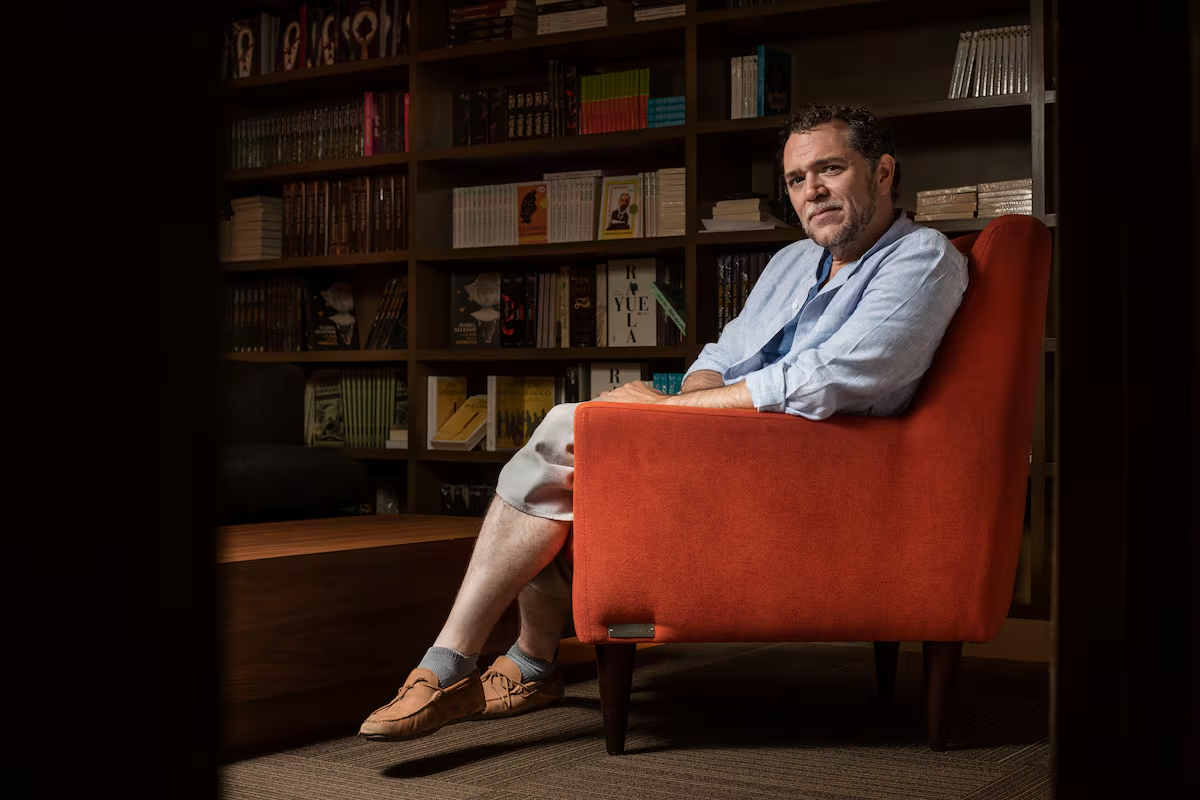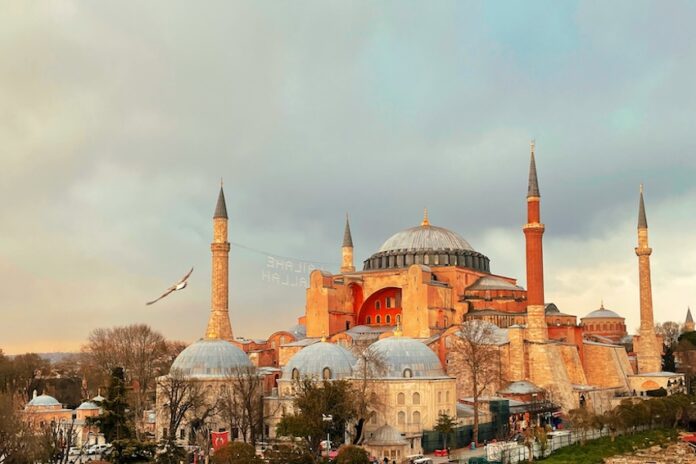It’s a question that challenges how we’ve traditionally understood one of history’s most significant encounters. The conventional narrative of 1521 focuses on conquest, colonization, and cultural destruction, a perspective that has shaped Mexican national identity for centuries. But one controversial historian is now asking whether this framework, while historically accurate in many respects, might be incomplete.
To understand it, we must first relocate ourselves to the East. It’s 1453. Constantinople, one of the world’s most fabulously wealthy cities, has been reduced to rubble. Sultan Mehmed II waits until dawn on May 29th to unleash his 80,000 troops against what’s left of Constantine XI’s defenses, who emerge for one last desperate attempt to save the glittering Byzantine capital. As churches burn and Ottoman flags are raised over the Hagia Sofia, now claimed for Islam, an undetectable but destructive ripple cascades westward. And it’s as if a hairline fissure appears beneath Tenochtitlán, the Americas’ grandest stronghold, which by 1521, would be gone. The world would be irrevocably changed – forever.

From Ottoman control to Spanish exploration
Constantinople’s strategic importance in international trade cannot be overstated. For centuries, the Byzantine capital controlled the Bosphorus Strait, one of the major trade routes connecting East and West. The strait connected with the legendary Silk Road, opening European gates to goods — notably spices and teas — from China, India, and Central Asia. The city’s geography made it Europe’s most important commercial center for a majority of the Medieval era.
The Ottoman Empire’s rise was aggressive, and brought devastating tariffs to these land routes connecting the two continents (sound familiar?), severely affecting the lucrative spice trade. It made sense for European nations to seek alternative transportation routes, as economies were crumbling, especially in critical Italian city-states like Venice and Genoa.
Spain, too, was feeling the blow, and the country’s response was rooted in centuries of maritime tradition. Spanish seafaring traced back to ancient times, when the Iberian Peninsula was home to coastal peoples like the Phoenicians, Greeks, and Carthaginians. Spain’s geographic advantage was stark: its extensive coastlines on both the Atlantic Ocean and Mediterranean Sea were perfectly positioned for oceanic exploration. By the 15th century, Spain had already started investing heavily in finding new trading sea routes, and Christopher Columbus’s 1492 expedition alone has been reported to have cost almost US $530,000 in today’s currency.
The Age of Discovery: A global transformation
Columbus famously miscalculated his route to Asia, believing India was about 4,000 km west of Spain, less than a quarter of the actual distance. This geographical error, combined with Spain’s access to Atlantic trade winds, led him to a place unknown to any European at the time, launching what we now call the Age of Discovery.

The Age of Discovery would last until 1600 and encompass far more than the uncovering of the Americas. In 1488, Bartolomeu Dias proved Africa could be circumnavigated when he rounded the Cape of Good Hope. A decade later, Vasco da Gama reached India using this very route, establishing a new wave (pun intended) of direct European-Asian sea trade. In 1513, Vasco Núñez de Balboa discovered the Pacific Ocean, proving to the world that the Americas were separate continents. The Magellan-Elcano expedition (1519-1522) completed the first global circumnavigation.
As these expeditions proved the world was bigger than previously thought, Spanish attention shifted from seeking a passage to Asia toward exploring and establishing settlements in newly accessible lands. These global shifts would famously lead Spanish conquistadors to the heart of the Mexica Empire, where Hernán Córtes and his indigenous allies would defy all odds and lay siege to the golden capital.
“The defeat marked not only the end of the Mexica Empire but the birth of a new colonial society dominated by Spain,” writes historian Stuart B. Schwartz. In the span of 30 years, Western understanding of world geography would be fundamentally transformed, a shift that would change the way humans understood both the world and each other.
Challenging the traditional narrative
Mexican historian Juan Miguel Zunzunegui is among those offering a different and somewhat controversial perspective. Instead of framing the Spanish encounter as purely violent subjugation, Zunzunegui proposes it was an “inevitable encounter” between two worlds that created a new civilization — not Mexica, not Spanish, but Mestizo.
“The stories we tell ourselves about ourselves become our reality,” observes Zunzunegui who, in addition to being a historian, is also a writer, philosopher, and lecturer known for his critical and revisionist approach to Mexican history. Born in Mexico City in 1975, Zunzunegui has authored over twenty books including “The Myths That Gave Us Trauma,” challenging conventional narratives about Mexico’s origins. “Through a historical narrative you construct the reality in which you live,” he explains.

Academic support for this cultural synthesis theory comes from Colin MacLachlan of Tulane University. In “Imperialism and the Origins of Mexican Culture,” MacLachlan argues that “modern Mestizo culture evolved over the centuries as a synthesis of Old and New World civilizations.” Both Spain and Mesoamerica were “on similar historical trajectories” when they collided.
“This idea that everything was perfect here before the Spanish arrived… is not only false, it’s very dangerous,” Zunzunegui argues. For many historians, including Zunzunegui, it comes down to facts: Mexico is the result of the mix between Indigenous and Spanish cultures. Mexico did not exist before 1521, and what did exist at that time was by no means a perfect society. The Mexica, as powerful as they were at their peak, survived only approximately 200 years and conquered numerous other indigenous civilizations through warfare. The boundaries of present-day Mexico were scattered among peoples connected primarily through war and trade — not a unified paradise.
The psychology of defeat narratives
“If the blame for all our decline lies in an event from 500 years ago, we’ve just handed our power to whoever tells that version of history that we believe,” Zunzunegui suggests. He makes an interesting comparison: are Turks constantly retelling stories of Constantinople’s destruction, a civilization that far surpassed Tenochtitlán in both power and age? In fact, they do not; they move forward and adapt, and allow this cycle of conquest and rebirth to serve as a stepping stone in the impactful journey that has made Turkey the historical powerhouse that it is today.
“In Mexico we make heroes of everyone who is violent, who leads revolutions, but most importantly, everyone who fights very hard and loses. We don’t make heroes of those who win.” Mexico’s tendency to glorify the loser — Cuauhtémoc, Hidalgo y Costilla, Zapata —profoundly affects the national mentality, encouraging a sense of victimhood. “If all peoples create historical myths to unite themselves, why do we in Mexico tell ourselves a myth of defeat, of humiliation? You can’t expect to tell all the children in Mexico that ‘we were humiliated, we were looted, we were conquered,’ but go ahead and move the country forward.”
Reframing Mexico’s foundation story
So why isn’t it “the rise of Mexico” as opposed to the “fall of Tenochtitlán”? This reframing isn’t just semantic: it’s transformative. Instead of viewing 1521 as an ending, could it instead be seen as a beginning? After all, it would be the birth of something unprecedented in human history — the meeting of East and West, that awkward interaction between Moctezuma and Córtes, is perhaps the most extraordinary moment that mankind has ever experienced.
The irony is striking: Constantinople’s fall, intended to consolidate Ottoman power in the East, might have inadvertently triggered the creation of a new civilization thousands of miles away. The economic pressures that forced Spain into the Atlantic were one factor that set in motion a chain of events that would birth modern Mexico — a synthesis that neither Mehmed II nor Constantine XI could have imagined.
“We are children of gods on both sides of the ocean,” Zunzunegui reflects. “Europe crossed the Atlantic to meet here with the best of America. That, for me, is the synthesis of Mexico’s history.” Thanks to Constantinople’s fall, global forces went into action and converged to create something entirely new. This reframing offers not just historical accuracy, but national empowerment. In a world where every nation tells empowering stories about its origins, Mexico’s story of synthesis and transformation could be told as the remarkable achievement it may have been.
Bethany Platanella is a travel planner and lifestyle writer based in Mexico City. She lives for the dopamine hit that comes directly after booking a plane ticket, exploring local markets, practicing yoga and munching on fresh tortillas. Sign up to receive her Sunday Love Letters to your inbox, peruse her blog or follow her on Instagram.
